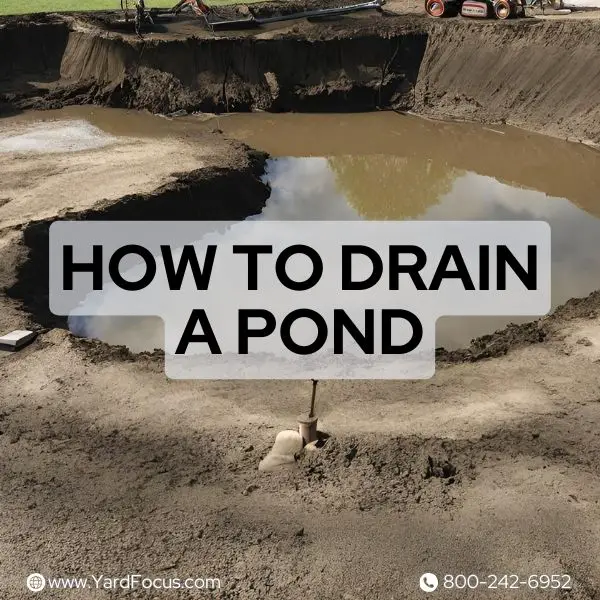Emptying a pond may seem like a daunting task, but with the right tools and techniques, it can be done efficiently and effectively. Whether you are cleaning your pond, relocating fish, or performing maintenance, knowing how to empty a pond properly is essential.
Step 1: Prepare the Area
Before starting the process of emptying your pond, make sure to prepare the surrounding area. Remove any rocks, plants, or debris that may obstruct the draining process. Clear a path for the water to flow out smoothly.
Step 2: Turn Off Pumps and Filters
It is crucial to turn off any pumps or filters connected to the pond to prevent damage during the draining process. Unplug all electrical equipment and ensure that the pond is safe to work around.
Step 3: Drain the Water
There are several methods you can use to drain the water from your pond. One common way is to siphon the water out using a hose. Simply submerge one end of the hose in the pond and suck on the other end until the water starts flowing out. Make sure to direct the water away from your home and garden to avoid flooding.
Step 4: Remove Fish and Plants
If you have fish or plants in your pond, you will need to remove them before emptying the water completely. Carefully catch the fish using a net and transfer them to a temporary holding tank with clean water. Remove plants and any other decorations from the pond as well.
Step 5: Clean the Pond
Once the pond is empty, it is time to clean the bottom and sides. Use a scrub brush or pressure washer to remove algae, debris, and any other buildup. Rinse the pond thoroughly to ensure all dirt is removed.
Step 6: Inspect for Damage
While the pond is empty, take the opportunity to inspect it for any damage or leaks. Check the liner, edges, and any other components for wear and tear. Repair any issues before refilling the pond.
Step 7: Refill the Pond
After cleaning and inspecting the pond, it is time to refill it with fresh water. Use a dechlorinator to remove any harmful chemicals from the water before reintroducing fish and plants. Monitor the water quality to ensure a healthy environment for your pond inhabitants.
Step 8: Reintroduce Fish and Plants
Once the pond is refilled and the water quality is stable, reintroduce your fish and plants. Acclimate them slowly to the new water conditions to prevent shock. Monitor their behavior and health in the following days.
Credit: permies.com
Step 9: Turn On Pumps and Filters
Finally, turn on the pumps and filters to circulate and clean the water in your pond. Ensure that the equipment is functioning properly and make any necessary adjustments to maintain optimal water conditions.

Credit: www.thepondguy.com
Conclusion
Emptying a pond may require time and effort, but following the steps outlined above will help you complete the process smoothly. Remember to prioritize the well-being of your fish and plants throughout the draining and refilling process. With proper care and maintenance, your pond will continue to be a beautiful and thriving aquatic ecosystem.


